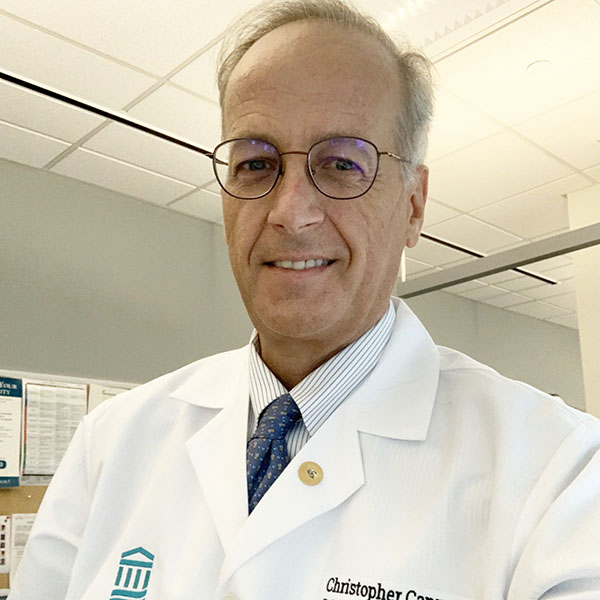When the heart suddenly starts racing
A rapid heartbeat that happens out of the blue can be alarming. A range of therapies can help.
- Reviewed by Christopher P. Cannon, MD, Editor in Chief, Harvard Heart Letter; Editorial Advisory Board Member, Harvard Health Publishing
You expect your heartbeat to accelerate if you're exercising or feeling extremely anxious. But in a small number of people, an electrical glitch in the heart's upper chamber causes their heart rate to suddenly soar for no apparent reason—sometimes as high as 200 beats per minute.
Called paroxysmal supraventricular tachycardia (PSVT), the condition is usually not dangerous (see "What is paroxysmal supraventricular tachycardia?"). "People often describe the symptoms as palpitations or a fluttering sensation in the chest," says Dr. Paul Zei, director of the Comprehensive Atrial Fibrillation Program at Harvard-affiliated Brigham and Women's Hospital. While these episodes typically appear out of the blue, exercise, stress, or certain foods and drugs (such as caffeine or other stimulants) sometimes trigger an episode. For some people, bending over at the waist can set off PSVT, he says.
The frequency and duration of the episodes varies widely. Some people have a bout just once every few years, while others have them several times a day. The episode may last just a few seconds or minutes. Others last for hours or, in rare cases, even days. These rapid-fire beats mean the ventricles don't have time to fill before the heart contracts. As a result, blood flow to the brain and body may drop, causing symptoms such as lightheadedness, breathlessness, and fainting, says Dr. Zei.
What is paroxysmal supraventricular tachycardia?
The heart's natural pacemaker, the sinoatrial node, generates electrical impulses that tell the heart to beat. But in a person with PSVT, the heart's steady rhythm undergoes sudden, periodic (paroxysmal) disruptions. An errant electrical signal from above the ventricle (supraventricular) overrides the sinoatrial node's normal signal and creates a series of very fast heartbeats (tachycardia). The vast majority of PSVTs are not life-threatening, although in rare circumstances, they can be dangerous, which is why people who experience repeated bouts of a racing heart should tell their doctor. Illustration by Scott Leighton |
How is PSVT diagnosed?
Fewer than about three in every 1,000 people have PSVT. It occurs in people of all ages, from babies to older adults, but half of all cases are in people ages 50 to 64. Women account for just over two-thirds of all cases.
Because a fast heartbeat and breathlessness are also common symptoms of anxiety, primary care doctors (who often aren't familiar with PSVT) may misdiagnose the problem as anxiety, especially in women, Dr. Zei says. An accurate diagnosis requires an electrocardiogram (ECG), a recording of the heart's electrical signature, at the time symptoms occur. Because the episodes don't last long, the heartbeat has usually returned to its normal rate by the time a person seeks medical attention. As a result, people with suspected PSVT usually need to wear a small ECG monitor on their chest for several days or weeks to confirm the diagnosis. Using a smartwatch or other device that can record an ECG is another option. "If a specialist examines the data, these readings can be quite accurate for diagnosing PSVT," says Dr. Zei.
Treatment options
People with bothersome symptoms can try a handful of simple tricks that stimulate the vagus nerve, which helps slow the conduction of electrical impulses through the heart and may resolve the tachycardia. They include
- coughing or gagging
- putting an ice-cold, wet towel on your face
- pressing gently on your closed eyes
- holding your breath while bearing down as if for a bowel movement.
The most effective technique, the modified Valsalva maneuver, involves sitting upright while blowing into a straw or small tube for 15 seconds. Next, you lie flat on your back and raise your legs to a 45° angle with another person supporting your legs for another 15 seconds. But if these methods don't work, people with persistent tachycardia usually need to go to urgent care or the emergency room to receive an injection or infusion of medication to return the heart to a normal beat. A nasal spray containing the experimental drug etripamil for treating PSVT is currently under FDA review.
Zapping away the problem
People with frequent, bothersome symptoms may want to consider catheter ablation, a short procedure done under mild sedation (meaning you're awake but relaxed and pain-free). After a doctor threads a catheter through a vein up to the heart, a zap of radiofrequency energy emitted from a device inside the catheter destroys the small area of tissue causing the errant electrical signal. For PSVT, catheter ablation has a 98% success rate and is quite safe. "It's one of the few cardiac procedures for which we can almost always tell patients they've been cured, and the problem won't ever occur again," says Dr. Zei. As with any procedure, make sure you understand all the pros and cons beforehand.
About the Author

Julie Corliss, Executive Editor, Harvard Heart Letter
About the Reviewer

Christopher P. Cannon, MD, Editor in Chief, Harvard Heart Letter; Editorial Advisory Board Member, Harvard Health Publishing
Disclaimer:
As a service to our readers, Harvard Health Publishing provides access to our library of archived content. Please note the date of last review or update on all articles.
No content on this site, regardless of date, should ever be used as a substitute for direct medical advice from your doctor or other qualified clinician.

















